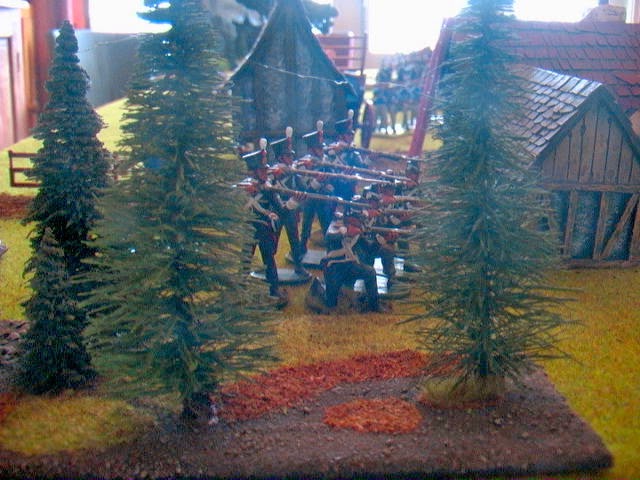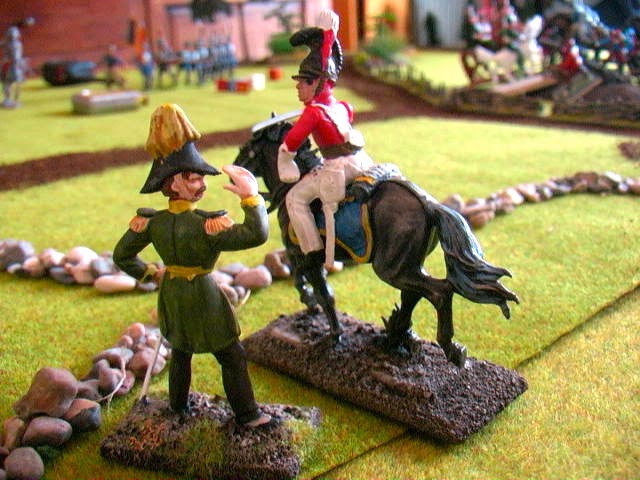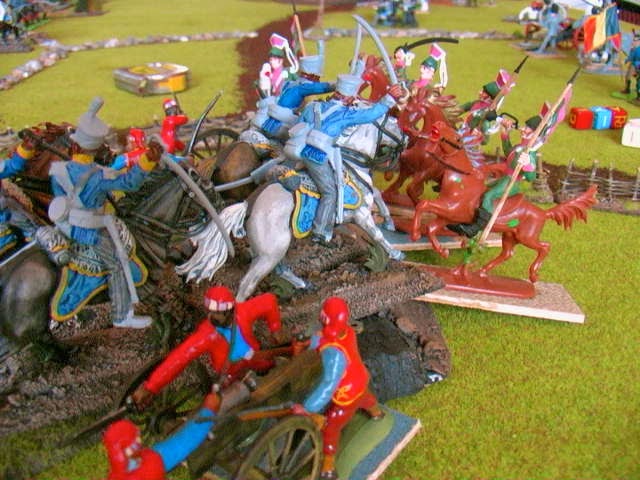The need for speed (and support)
To make a long story short: a specific characteristic of a boring game is when you need a clean shave, during it. Keeping up the pace comes with knowledge of the rules, even when they're simple and the mechanism makes sense. About Bonaparte is no exception to this rule. That's why a potential new player gathers information and skills before entering a more 'serious' confrontation. This message deals with such 'getting to know each other' games. Franco/Dutch player is Stan (you see him in the last of the pictures). I (being a novice in the rules too) will take the British side on my account.
Setting1809, province of Zeeland in the South-West of the nowadays Netherlands. Mostly large islands in the Kingdom Holland (supervised by King Louis Napoleon). On the 29th of July, an observation post at the coastal region of the isle of Walcheren, reports 104 vessels approaching the Dutch beaches. They' re British. It's the beginning of an attempted invasion. King Louis has been ordered to send large quantities of soldiers on campaign in both Germany and Spain. The Dutch, being on the French side, are underpowered. The Allied forces try their luck. They hope for a quick campaign rolling up both the (harbours) city of Antwerp and Rotterdam.
I'm still into organising my 54mm figures into coherent groups of armed forces. At this stage: having chosen a subject for a game does (for me) not imply I need to have all the specific figures (if available) or them being all painted in the correct uniforms. It's possible to grab some degrees of less historical accuracy in favour of opportunities and fun. We used Dutch Waterloo Infantry for Kingdom Holland forces, French bicorne figures as their allies. Hat, Italeri, Jean, ACTA, Airfix, Hing Fat and Britains Deetail as available for- or needed by the scenario.
The game surface is a table tennis table covered with grass mat (Berko) and removable scenery elements. Ideally I would like a modular gameboard system. What we used here now works okay, too. It's a bit more laborious to set up and get rid off, afterwards. My scenic roads are made of grinded (and dryed) coffee from our coffee machine. I use that as a flocking material on bases and scenery pieces as well. The pebble walls simulate knee high obstacles. Intersecting the landscape and breaking up march movement unless using the roads. Behind and in base contact it gives targets a modification of D-1 as in woods or rough terrain. Cavalry can jump over them unrestrained.
A key event in this game:
French lancer cavalry make their way towards a un deployed unit of two medium cannons. They reach with ease in their charge. A keen light dragoons unit from the opposite side, just fully recovered from their seasickness, read the incident correctly and countercharge without any hesitation. Both sides suffer but the remaining lancers need to turn tail too, two flags! Demoralized by the minor defeat, the French/Dutch player holds his reigns for most of the remaining game.
Making it possible for the outermost right flank regular line infantry unit to come and try their luck closer to the heart of the action.
French lancer cavalry make their way towards a un deployed unit of two medium cannons. They reach with ease in their charge. A keen light dragoons unit from the opposite side, just fully recovered from their seasickness, read the incident correctly and countercharge without any hesitation. Both sides suffer but the remaining lancers need to turn tail too, two flags! Demoralized by the minor defeat, the French/Dutch player holds his reigns for most of the remaining game.
Making it possible for the outermost right flank regular line infantry unit to come and try their luck closer to the heart of the action.
This is where we went ahead on the clock, pushing it an imaginary 24 game hours forward.
Leading us into a next (the same afternoon) skirmish for rookies. Illustrating the arrival and possible breakthrough of more redcoats.






Hi Marcel,
ReplyDeleteNow it's up to me to take a look at your work.
Can I ask how many soldiers did you put in the game?
I agree also on the need to learn the rules for non-stop "in game", but I have found people to play and they does not want to read the rules or paint toy soldiers and I have to be happy so.
So I will be forced to play by the rules at hand. Congratulations for the battlefield, it is very varied and beautiful to see. What buildings did you use?
See you soon on the pages of the blog.
Massimo
Thanks for the compliment. Kingdom of Holland/French alliance versus British/Scottish invaders. Played on the longest width of a ( table tennis) battlefield.
ReplyDeleteBoth players have one CIC ( 2 command dice ) ADC ( 1 ) and 3 officers in the field ( 3 x 1 ) . A total of 6 command dice per turn .
Each side has a grenadiers unit of 8, a regular line unit with fusiliers (8) and a light infantry(8) unit. One cavalry unit each and two light guns with three men crew each. I think it's essential to be familiar with most of the rules in a set. To keep a game 'rolling' is important. Thankfully About Bonaparte is a ruleset that makes sense. If you can imagine what factors played a leading role in an actual conflict, it's easy to understand what happens when you refight it with Dirk's book in hand.
Buildings are actually smaller to scale then 54mm (saves space on the table and yet looks good). It's a mix of self build items and some commercial available ones. The landscape scenery is all scratch build by me.
Hallo Marcel,
ReplyDeleteLooks like a fun game. Nice work on the scenery.
Concerning the cavalry chargers: it's common in a wargame to start with cavalry chargers. Mostly because they are the fastest troops in the game. yet when we look at the actual battle reports, this rarely happens. First of all, when infantry is fresh, and well supported chanses for a successfull charge are small. Cavalry is very good for pusuit or for covering a retreat. It also very ussefull for breaking enemy units that are wavering. The doubling of flags reflects this impact cavalry can have or undergo. So it's important also in the game to keep your cavalry in reserve, using in situations they have a good chance on success.
Using coffee for senery is a great idea!